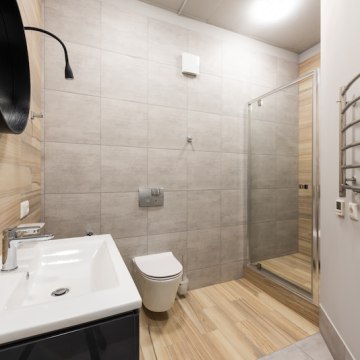

Most people spend most of their day between four walls, whether at home, at school, at the office or at the gym. Wherever you spend your time, it is important to maintain a healthy indoor climate to prevent health problems. In this blog, we explain exactly what a healthy indoor climate is and why it is so important. We also give you 5 helpful tips to improve your indoor climate.


The indoor climate is determined by factors such as temperature, humidity and fresh air. Because we are all different, everyone has their own way of experiencing a comfortable indoor climate. Some people like warmer temperatures, while others prefer cooler temperatures.
In general, the most comfortable indoor climate is between 18 degrees with 70% humidity and 24 degrees with 40% humidity.
Of course, the ideal indoor climate depends on the purpose and content of the room. For example, a gym will have a different indoor climate to a home.
A comfortable indoor climate is not only good for you, it is also good for your health.
Influenza viruses, for example, are very active at humidity levels below 40%. This means that if the indoor climate is poor, you are more likely to catch a virus.
Complaints such as headaches, fatigue, chest tightness and nasal congestion can also be prevented by a healthy indoor climate.
There are several things you can do to keep your indoor climate as healthy as possible. Here are five tips to help you create the healthiest indoor climate possible.
Maintenance of a mechanical ventilation system is necessary to minimise air pollution. Therefore, have your ventilation system cleaned regularly by a professional. An inspection can show whether the ventilation system is still working properly and whether its capacity is still being achieved.
Try to avoid polluting products as much as possible. Products such as hairspray, perfume, deodorant or air fresheners have a major impact on the indoor climate.
Cleaning products can also affect the indoor climate. Fortunately, there are more and more alternatives on the market, such as probiotic cleaning products, which have little or no impact on air quality.
Do you not have a demand controlled ventilation system? Then add CO2 and humidity sensors to your current ventilation system. These sensors ensure that the ventilation system responds automatically when CO2 and humidity levels are too high in a room. This way you never have to adjust the ventilation system manually.
Do you not have a demand controlled ventilation system? Then add CO2 and humidity sensors to your current ventilation system. These sensors ensure that the ventilation system responds automatically when CO2 and humidity levels are too high in a room. This way you never have to adjust the ventilation system manually.
If your ventilation system does not have CO2 sensors, it is important to increase the setting manually when necessary. This is especially important when you are cooking, baking, showering or washing.
For example, turn up the extractor fan in your kitchen while you are cooking, especially if you use gas. Cooking produces a lot of fine dust, so using an extractor hood is also a must! Make sure you use the extractor hood during and up to one hour after cooking.
Does the indoor climate in your home or (business) premises leave something to be desired? Or would you like to know more about a healthy indoor climate? Then feel free to contact us. We will be happy to tell you more and can take care of the maintenance of your ventilation system.